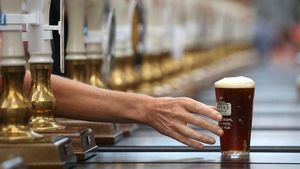British university finds way to turn beer into vehicle fuel
Scientists at Bristol University have used the ethanol in alcoholic drinks to create butanol, which is seen as an ideal replacement for petrol and diesel

Chemists at the University of Bristol are working to turn beer into a sustainable alternative to petrol.
Although ethanol, the type of alcohol found in alcoholic drinks, is not an ideal replacement for petrol, technology is being developed to convert it into butanol, which is far more suitable.
They have been able to produce it using pure, dry ethanol in laboratory conditions, but for the technology to be scaled up it needs to work with real ethanol “fermentation broths”.
Professor Duncan Wass, whose team led the research, said: “Alcoholic drinks are an ideal model for industrial ethanol fermentation broths – ethanol for fuel is essentially made using a brewing process.
“If our technology works with alcoholic drinks – especially beer, which is the best model – then it shows it has the potential to be scaled up to make butanol as a petrol replacement on an industrial scale.”
This key technology is a special catalyst – a chemical that can speed up and control chemical reactions – and by showing that it can be used to convert a “real” ethanol mixture into butanol, the scientists have shown they can make large enough quantities.
Wass added: “We wouldn’t actually want to use beer on an industrial scale and compete with potential food crops.
“But there are ways to obtain ethanol for fuel from fermentation that produce something that chemically is very much like beer – so beer is an excellent readily available model to test our technology.
The team are now faced with the challenge of applying this technology on a larger scale – which could take as long as five years. They will also try to better understand why their catalysts have been so successful.
Wass said: “Turning beer into petrol was a bit of fun, and something to do with the leftovers of the lab Christmas party, but it has a serious point.
“Beer is actually an excellent model for the mixture of chemicals we would need to use in a real industrial process, so it shows this technology is one step closer to reality.”





